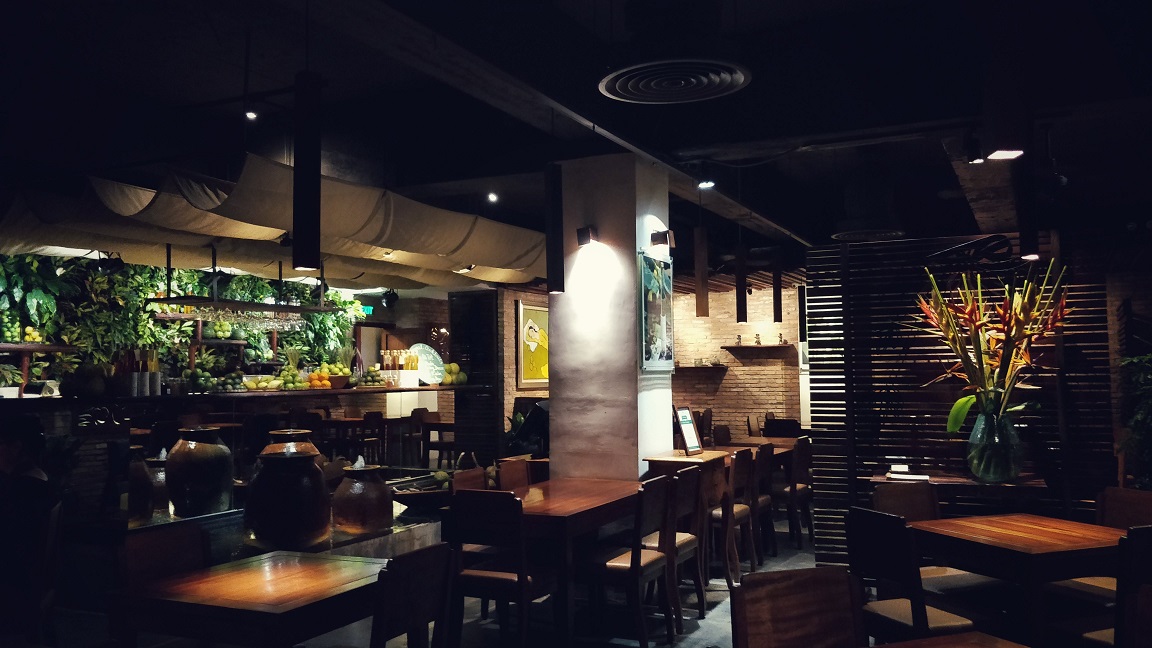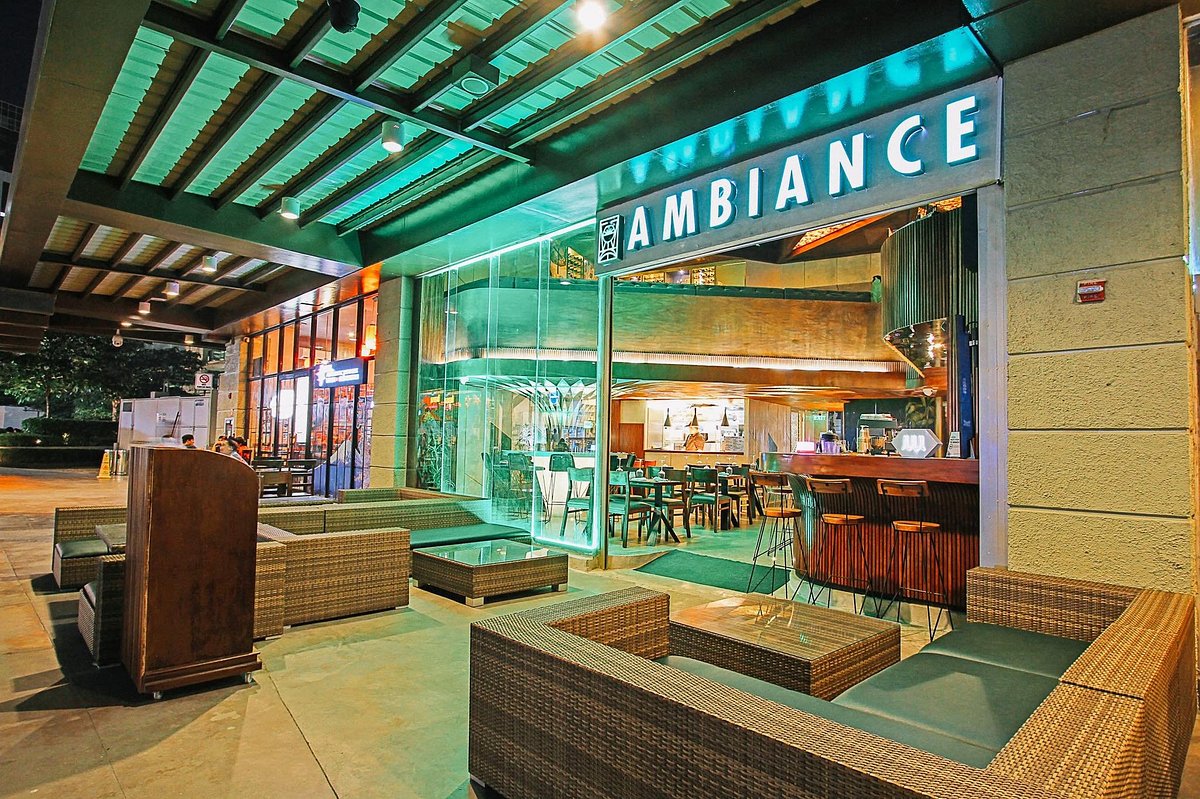Romantic Restaurants Islamabad: Perfect Dining Locations for Pairs
Romantic Restaurants Islamabad: Perfect Dining Locations for Pairs
Blog Article
Savor Authentic Oriental Cuisine With a Pan-Asian Twist for a Cooking Experience
Starting a cooking trip with genuine Eastern food, boosted with a Pan-Asian twist, uses an one-of-a-kind possibility to check out the rich tapestry of flavors that define the area's diverse culinary practices. This experience welcomes you to appreciate the elegant balance of preferences-- pleasant, salty, spicy, and sour-- balanced by fragrant herbs and flavors. Imagine the ingenious fusion of Thai curry and ramen or the unforeseen delight of sushi burritos. As you contemplate these tempting recipes, think about the cultural narratives and historic influences that form them, each bite using a tale waiting to be discovered.

Checking Out Pan-Asian Tastes
In the world of global gastronomy, Pan-Asian cuisine stands apart for its impressive diversity and the harmonious interplay of flavors from numerous Oriental societies. This cooking strategy commemorates the one-of-a-kind active ingredients and abundant customs discovered across the continent, producing a tapestry of preferences that is both fascinating and gratifying. Trick to Pan-Asian cuisine is its capability to stabilize contrasting flavors-- pleasant, salty, spicy, and sour-- while highlighting the freshness and top quality of each component.
From the umami-rich soy sauce of Japan to the fiery chili peppers of Thailand, Pan-Asian food supplies a comprehensive combination of tastes. These elements are often incorporated in creative methods, improving recipes with layers of intricacy. For example, making use of great smelling herbs such as lemongrass and cilantro, common in Vietnamese and Thai cuisine, adds a refreshing brightness to meals, while the consolidation of coconut milk provides a creamy, rich texture.
The emphasis on fresh produce and aromatic flavors guarantees that each meal is not just a feast for the taste buds however also for the detects. Pan-Asian food welcomes diners to start a culinary trip, checking out the vast and differed landscapes of Eastern gastronomy with every bite.
Fusion Recipes to Attempt
While Pan-Asian food is commemorated for its traditional tastes, the modern cooking landscape is significantly welcoming combination recipes that mix these classic components with impacts from various other regions. This ingenious technique not just honors the abundant heritage of Asian cooking arts yet likewise introduces novel taste experiences that attract modern tastes.
An archetype of such a fusion recipe is the Korean-Mexican taco, where seasoned bulgogi beef is covered in a warm tortilla, covered with kimchi and a hot gochujang-infused salsa. This mix marries the bold, mouthwatering flavors of Korea with the dynamic, fresh aspects of Mexican food. Similarly, sushi burritos have acquired appeal, integrating the fragile artistry of Japanese sushi with the hearty, hand-held comfort of a burrito, frequently featuring fusion ingredients like tempura shrimp and avocado with a drizzle of wasabi mayo.
An additional noteworthy dish is Thai curry ramen, which infuses the creamy, fragrant spices of Thai curry right into the soothing broth of conventional Japanese ramen, developing a harmonious mix that tantalizes the senses. These blend dishes prolong past plain uniqueness; they represent a cooking dialogue between societies, urging exploration and technology in the globe of Pan-Asian cuisine.
Vital Active Ingredients and Spices
To genuinely appreciate Pan-Asian cuisine, one have to comprehend the essential active ingredients and flavors that form its foundation. This varied culinary design draws from a rich tapestry of Asian practices, employing an unified blend of appearances and flavors.
Fragrant components are crucial, with lemongrass, ginger, and garlic being ubiquitous throughout different Pan-Asian dishes. These active ingredients give an aromatic base that improves the complexity of flavors. Seasonings such as star anise, cardamom, and cinnamon present heat and personality, resembling influences from regions like China and India.

Cooking Methods and Tips
Understanding the art of Pan-Asian food calls for familiarity with its unique cooking techniques, each adding to the vibrant tapestry of tastes this cooking custom is commemorated for. Central to these techniques is the stir-fry, a rapid food preparation technique that preserves the dietary stability and vivid colors of active ingredients. Using a wok, the stir-fry method allows for even heat circulation, essential for attaining the particular texture and flavor balance of Pan-Asian recipes.
Another essential technique is steaming, particularly common in Chinese food. This gentle technique maintains the natural flavors and nutrients of ingredients, making it optimal for fish and shellfish and veggies. Dumplings, a cherished staple, usually take advantage of steaming, causing soft, delicious textures.
Barbecuing, additionally integral, imparts smoky midsts to dishes such as Oriental bulgogi or Japanese yakitori (Fine dining experience Islamabad). This method often includes marinading components, permitting tastes to permeate deeply before cooking over an open fire or hot plate
Last but mancino's not least, understanding the art of stabilizing flavors-- wonderful, sour, salted, bitter, and umami-- is crucial. Effectively layering these great post to read aspects can elevate a meal from regular to remarkable, providing a complicated and pleasing culinary experience that personifies the essence of Pan-Asian food.
Dining Experiences Worldwide
Around the world, Pan-Asian food offers an exceptional dining experience, commemorated for its rich tapestry of flavors and vivid presentations. This culinary phenomenon has gone beyond social borders, recording the hearts and palates of food lovers worldwide. In cosmopolitan cities like New York, London, and Sydney, Pan-Asian restaurants act as fusions where cooking customs from Thailand, Japan, China, and beyond assemble, giving diners with a diverse mix of dishes that highlight the region's variety.
The worldwide allure of Pan-Asian cuisine lies in its ability to provide both credibility and technology. Chefs masterfully marry typical active ingredients such as lemongrass, soy sauce, and miso with contemporary methods, resulting in dishes that are both familiar and refreshingly brand-new. This blend allows restaurants to embark on a cooking trip that respects heritage while welcoming modernity.
Furthermore, eating experiences are raised with attentively made settings that mirror the values of Pan-Asian aesthetics. From minimal Japanese-inspired insides to vibrant Thai-themed areas, each restaurant supplies an one-of-a-kind setting that enhances the cooking offerings. As an outcome, customers are not simply consuming a meal but partaking in a cultural experience, making Pan-Asian eating an absolutely international phenomenon.
Conclusion
The expedition of Pan-Asian cuisine provides an extensive understanding of the elaborate interaction of tastes and cooking traditions throughout Asia. By accepting blend recipes such as Thai curry ramen and sushi burritos, the culinary journey not only highlights the flexibility of typical active ingredients but also showcases innovative modern techniques. This gastronomic journey, improved by essential spices and cooking methods, supplies an unique chance to value the social variety and culinary creativity that specify Pan-Asian food on a global range.
Embarking on a culinary trip via genuine find more Asian cuisine, improved with a Pan-Asian twist, offers an unique chance to discover the rich tapestry of flavors that define the area's varied cooking practices.In the realm of international gastronomy, Pan-Asian cuisine stands out for its remarkable variety and the unified interplay of flavors from different Asian cultures. Key to Pan-Asian food is its capability to balance contrasting flavors-- pleasant, salty, spicy, and sour-- while highlighting the freshness and quality of each ingredient.

Report this page